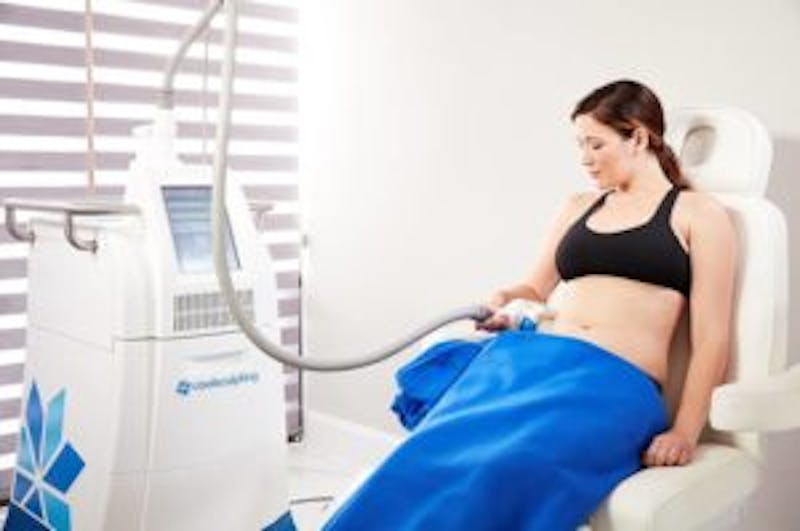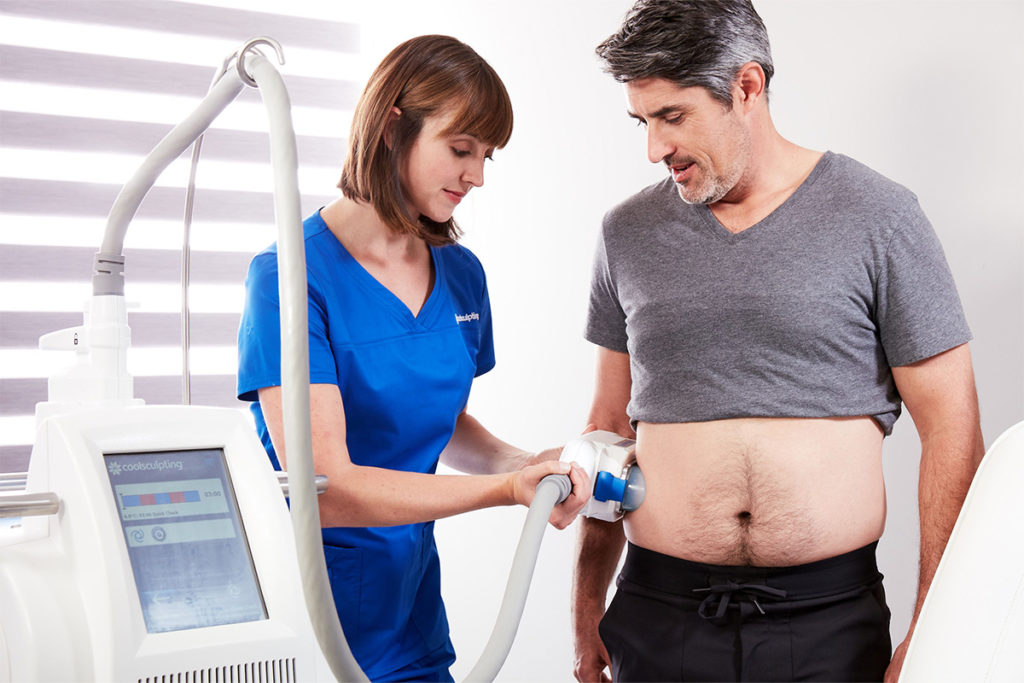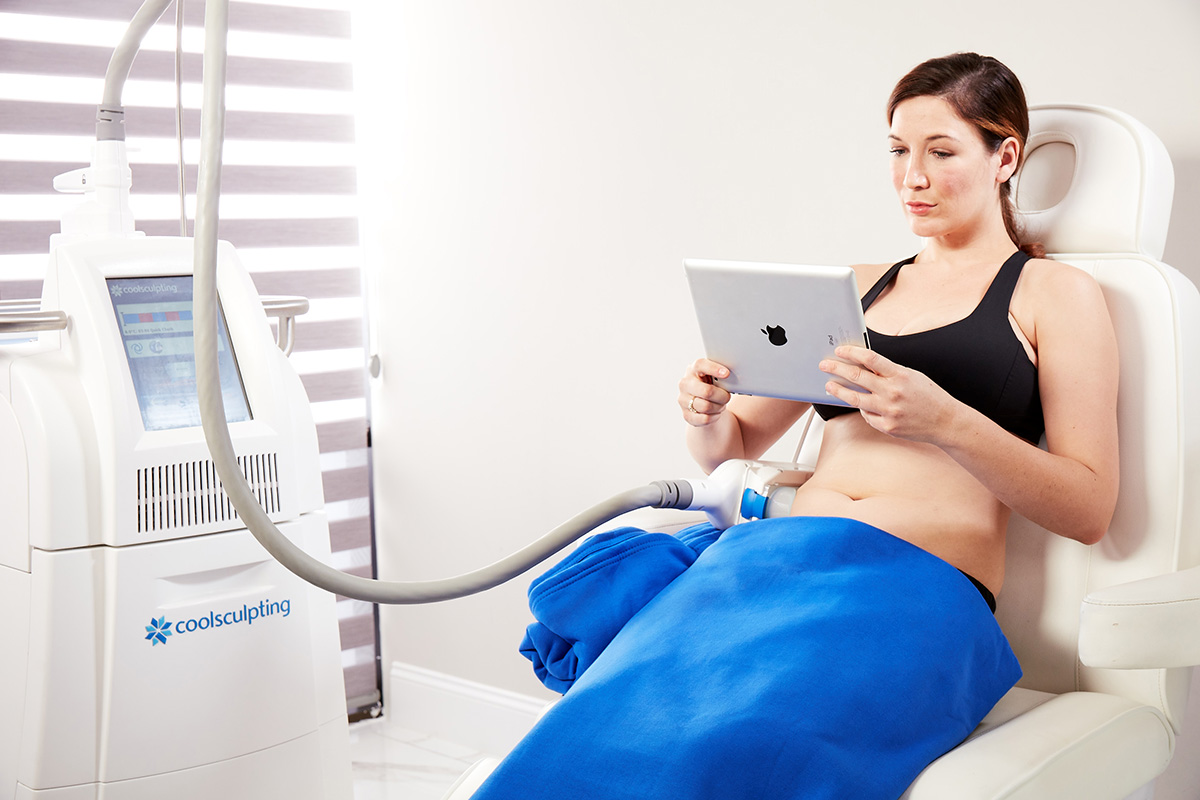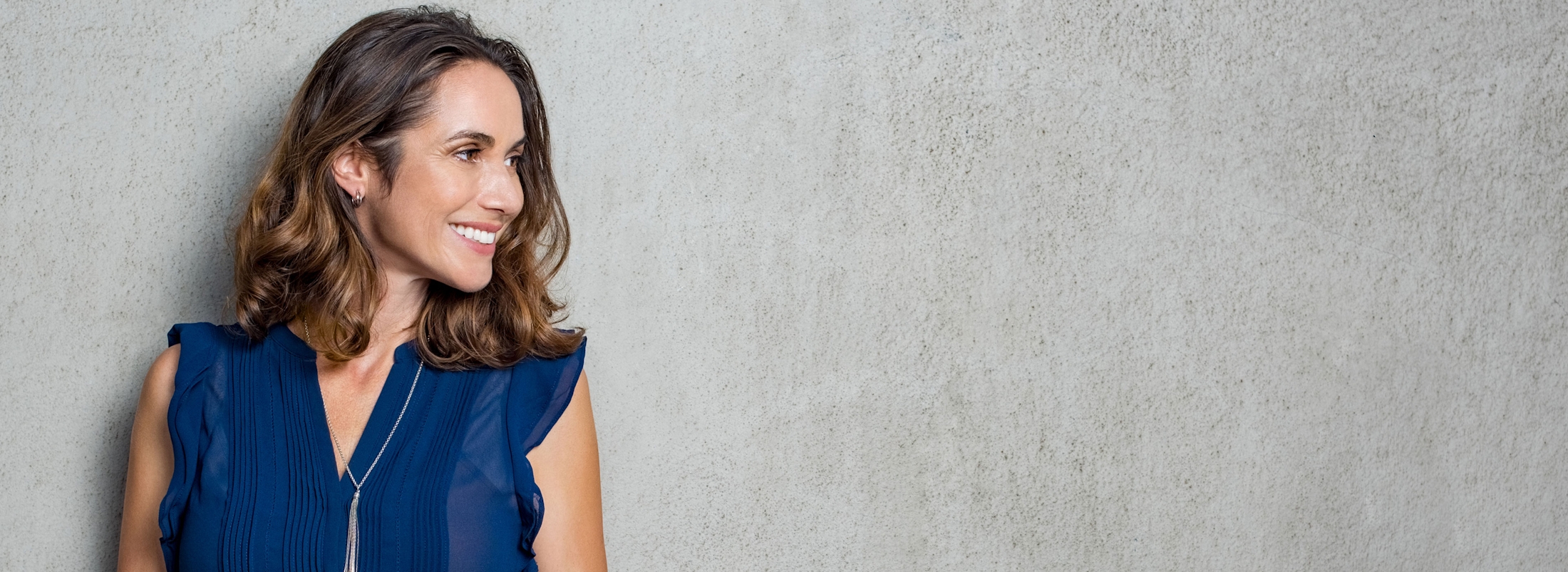
21 Sep 2023 | by Leonard Miller, MD, FACS, FRCS
If you’re looking for a way to reduce fat in specific areas of your body and considering CoolSculpting as an option, keep reading. In this post, the Boston Center for Plastic Surgery will answer the ten most commonly asked questions about CoolSculpting.
1. What is CoolSculpting?
CoolSculpting is an effective, completely non-invasive procedure for fat reduction. It is designed to freeze targeted fat cells and stimulate the body’s own natural process of ridding itself of them. Even the stubborn fat cells that have been previously resistant to diet and exercise can be successfully eliminated with this non-surgical treatment.
CoolSculpting has very little risk, especially when compared to bariatric surgery or other more invasive fat reduction procedures.
CoolSculpting Is Not Considered a Weight Loss Procedure
CoolSculpting is a non-surgical cosmetic procedure approved for fat reduction, but is ineffective for managing obesity. Good candidates are close to their ideal weight.
2. How Many CoolSculpting Sessions Are Needed To See Results?
Many patients wonder how many sessions will be necessary to reach their aesthetic goals. While multiple treatments might be necessary, patients can see a 20-25% fat reduction in the treated area after only one treatment.
However, CoolSculpting results are not immediate; the body takes time to metabolize and dispose of the treated fat cells. Patients will begin to see results in two to six weeks and our surgeons advise patients to wait 90 days for the final results to become apparent before requesting additional sessions.
See more patients »3. How Many CoolSculpting Treatments Are Needed for the Stomach?

As the stomach is a larger treatment area of the body, it may be necessary for two or more CoolSculpting treatments to target all of the excess fat.
CoolSculpting targets subcutaneous fat to help smooth and contour the stomach. However, there are factors other than subcutaneous fat involved with the stomach that can make it look larger. A patient should have his or her specific situation assessed in order to know exactly how many treatments are needed.
Although new fat cells won’t appear, CoolScupting won’t stop the remaining fat cells from growing if a patient gains weight. In this situation, more treatments are necessary.
If you are curious as to how many CoolSculpting treatments may be necessary to help you reach your specific goals, schedule a consultation with one of our board-certified plastic surgeons at the Boston Center for Plastic Surgery so you can discuss the possibility of a CoolSculpting procedure in more depth.
4. How Does CoolSculpting Work?
CoolSculpting utilizes extremely cold temperatures to freeze unwanted fat cells. This process is also known as cryolipolysis. When fat cells freeze and are damaged, they are eventually naturally metabolized and eliminated by the body, a process called apoptosis.
The CoolScupting cryolipolysis treatment uses specialized applicators in each treatment area that specifically target only the unwanted fat and leave the surrounding tissues unharmed.
The Ideal Candidate For CoolSculpting
CoolSculpting works best on people who are close to their ideal body weight for their build and have subcutaneous (pinchable) fat on stubborn areas. At each Boston Center for Plastic Surgery consultation, patients’ fat deposits and skin elasticity are assessed to be sure that the procedure will provide the desired result.
5. Does CoolSculpting Hurt?
CoolSculpting sessions are conducted in a comfortable, private room. The newest technology has reduced discomfort for patients. Patients may experience slight discomfort and a cooling sensation. Most patients report being comfortable enough to read a book, listen to music, or even take a nap.
CoolSculpting Recovery
While it is possible to experience side effects following any procedure, after CoolSculpting most patients have no problem returning to work, exercise, and their other normal activities the same day.
Each CoolSculpting session is non-invasive and does not require anesthesia, needles, or incisions. Patients should follow all post-treatment instructions provided by their doctor. This includes eating healthy and exercising regularly to avoid enlarging the remaining fat cells in the treated area.
6. Will CoolSculpting Tighten Skin?
CoolSculpting is intended to reduce fat rather than tighten skin. Some people may notice an improvement in the appearance of their skin after CoolSculpting because the procedure can help improve body contours, making the skin appear tighter.
For patients with good skin tone, a tighter and smoother appearance is possible after CoolSculpting treatment. However, patients with loose or lax skin may experience drooping after treatment. If you are concerned about loose or sagging skin, other procedures may be more effective at tightening the skin.
At a Boston Center for Plastic Surgery consultation, you will receive a personalized treatment plan to help you meet your aesthetic goals.

7. Are CoolSculpting Results Permanent?
While CoolSculpting treatment provides long-lasting results because the eliminated fat cells will not return, the remaining fat cells can still enlarge with weight gain. As with any body contouring procedure, patients need to commit to a lifestyle with regular exercise and a healthy diet to maintain and extend the benefits of their CoolSculpting treatment.
Additional CoolSculpting Treatments
It is safe for patients to receive additional treatment after they have gained weight, but it is still recommended that they are close to their ideal weight beforehand.
8. How Much Fat Can CoolSculpting Remove?
It is hard to estimate the number of sessions a person will need without having a consultation. some patients will only need one, while others will need several to achieve their goals.
CoolSculpting can result in a 20-25% reduction in unwanted fatty tissue with each treatment. In the case that additional fat elimination is needed, CoolSculpting can be repeated safely.
It is important for patients to give adequate time for results to appear before requesting another CoolSculpting procedure. In some cases, patients should wait up to six months while living a healthy lifestyle as treatment areas may continue to show improvement during that time.
See more patients »DualSculpting
DualSculpting is performed using two CoolSculpting machines, allowing two areas of the body to be treated simultaneously. For example, patients can benefit from DualSculpting for both upper arms or inner and outer thighs in half the time.
The Boston Center for Plastic Surgery in Brookline is one of the very few facilities that can offer this advantage to their patients.
9. Who Does CoolSculpting Near Me?
If you are in the Boston area, the Boston Center for Plastic Surgery provides CoolSculpting and many other surgical and non-surgical procedures.
To learn more about CoolSculpting, plastic surgery, and other procedures, schedule a consultation with a board-certified plastic surgeon.
10. How Much Does CoolSculpting Cost?
CoolSculpting costs can vary from patient to patient and are determined by several factors. These factors include which treatment area is being targeted (which application device will be used) and how many CoolSculpting treatments will be necessary.
New Year’s Special
Beginning January 3rd, 2023, The Boston Center for Plastic Surgery will offer a special on CoolSculpting. Patients can receive 50% off 8 or more sessions of CoolSculpting, perfect for those who are wanting to reach their aesthetic and fat reduction goals in 2023. Learn more here.
Schedule a Consultation Now
For more information about CoolSculpting treatment or any other non-invasive treatments available at the Boston Center for Plastic Surgery, or to schedule a private consultation with a board-certified plastic surgeon, please contact us at (617) 735-8735 or fill out our online Contact Us form. The Boston Center for Plastic Surgery has two offices for your convenience: 69 Newbury Street in Boston and Brookline Place in Brookline. We are looking forward to helping you achieve your 2023 aesthetic goals.
